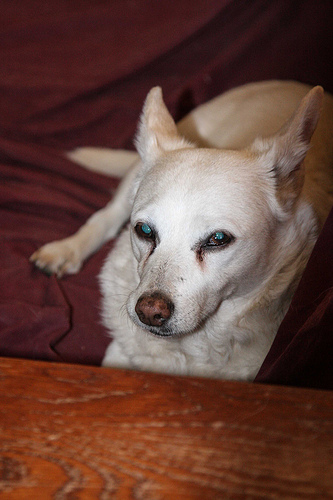
As your dog ages (and sometimes for other causes), he may lose his eyesight. You may observe him being clumsy around the house and fearful of things he used to be used to. Petting him may make him fearful because he can’t see as clearly. A preemptive way to help with this is to make sure that he knows his commands ahead of time. Knowing the basics of, “Sit,” or, “stay,” or “come,” will be extremely helpful for your dog to know if his vision becomes impaired.
Your home is likely already a safe place for your dog, but you should take extra care to make sure unsafe items are out of your dog’s path. Make sure they cannot easily get themselves into a harmful situation. When their vision deteriorates it is extremely helpful for your pet if you keep things familiar at home. Don’t move their water or food bowls and keep his treats and toys in the same areas.
It may tempt you to coddle your dog at this time, but it is important not to do so. It will impede your dog’s progress as they transition into a vision-impaired state. It also is important to stay upbeat. As with other training exercises it is important to remember that your emotions can transfer to your dog, and sadness can distress them when their stress levels will already be high.
It will be a stressful time, but providing your dog with the love, training and support they need can help make the vision-impairment a manageable part of their lives and yours.
